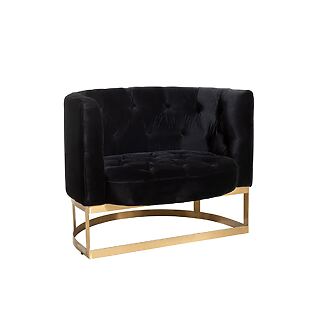Arch art that accompanies our everyday life is constantly and clearly noticeable . People who live in the vicinity of really impressive buildings will certainly gain permanent quality of life if they are reminded every day about what treasures they have around them - in contrast to the tourists who come extra to look at these impressive buildings, they are available every day!
In Germany we can follow the structural traces of the past antiquity
At the beginning of our era, the world power at the time, the Roman Empire , parts of the country inhabited by Germanic tribes at the time, and it was also they were the first to leave the first architectural works (the Germanic tribes lived in wooden hustle and bustle and did not hand over any permanent buildings).
To admire today, some remains of the Roman border attachment that arose around 100 to 150 AD. The Limes touched today's federal states of Bavaria, Baden-Württemberg, Rhineland-Palatinate and Hesse. This complex system of barriers is to be followed in the field as a entirety of palisades, ditches and ramparts to this day .
Since a barrier, however built, does not seem extremely spectacular when visiting on site, some of the approximately 900 watchtowers and the approximately 120 smaller and larger troop warehouse or castle were reconstructed in a variety of ways.

by Howi-Horsch, Willy [CC BY-SA 3.0], Wikimedia Commons
Which of the reconstructions really worth a visit has Claus Te Vehne from 74189 Weinsberg in an admirable detailed work on his www.limesseiten.de . Here you will find even more about the Roman legacies at Limes in Baden-Württemberg, Bavaria, Hesse, North Rhine-Westphalia, Rhineland-Palatinate and in Saarland.
In addition to military facilities, you can also discover Roman estates and other finds such as building inscriptions, quarries or grave inscriptions. In many cases with photos, so that the walk through this website is an educational and entertaining excursion into the past.
However, if you want to inspire children with this excursion into our origins of the architecture area, you should find out special days like the Roman days in the riding castle and Roman museum Aalen (demonstrations, show fights, fashion shows, Roman dishes) or one of the campaign days in the fully reconstructed Kastell Saalburg near Bad Homburg, which contain a lot of exciting topics.
The Romans also had a civilian life for which they built bridges and thermal baths and amphitheater and city gates, for example the Porta Nigra , the best preserved city gate of antiquity , which is located on the edge of the city center of Trier today.
In the ancient Roman city there are also the ruins of various thermal baths, a reconstructed basilica (Constantin basilica), the Roman bridge and an amphitheater, and the first walls of the cathedral also come from Roman times, as well as the beginnings of the Cologne cathedral . In the original Roman cities of Augusta Vindelicorum (Augsburg) and Cambodunum (Kempten), Roman building can be found in some other places in Bavaria, Hesse and Baden-Württemberg.

from Testus [CC BY-SA 3.0], Wikimedia Commons
From the time of their greatest spread, the Romans were slowly pushed back by the most varied Germanic tribes, with them the urban culture and progress from architecture disappeared for a while, only with Charlemagne had the Franconian Empire by the Roman rule, to tackle a ruler that had significant buildings.
In the meantime, we have now the 8th century in architecture , the epoch described in art history , which primarily classifies buildings and encompasses the transition from late antiquity to Romanesque , i.e. the period from 5th to the 11th century.
Charlemagne or his master builder Odo von Metz left us the Palatinate chapel in Aachen, which was probably built in 793 in several years (it was consecrated in 798).
This chapel of the then Kaiserpfalz, which today forms the center of the Aachen Cathedral, was designed as a octagon and is probably based on the most famous buildings of the time.
San Vitale in Ravenna and the Church of Saints Sergios and Bakchos in Constantinople (“Little Hagia Sophia”), important Byzantine church buildings from the 6th century, have also shone with octagonal domes such as St. Gereon and the Praetorium in Cologne.
These buildings realized the highest architectural art of the time, which the Franke Odo von Metz was unable to add a new knowledge around 150 years later, the Palatinate chapel of the emperor remained even more than another 200 years the highest and longest building north of the Alps.

(illustration from Meyer's conversation lexicon. Fourth edition)
Explanations of the illustration:
- Fig. 1: Quellhaus zu Tusculum (Etr.)
- Fig. 2: Construction of the round arch (Etr.)
- Fig. 3: Thor zu Volterra (Etr.)
- Fig. 4: Thor zu Perugia (Etr.)
- Fig. 5: The Cloaca Maxima to Rome (Etr.). Approx. 600 BC Chr.
- Fig. 6: Etruscan temple. According to G. Semper's reconstream.
- Fig. 7: floor plan of the Etrusk. Temple
- Fig. 8: Pillars from the Cucumella to Vulci (Etr.)
- Fig. 9: So -called Grave of the Horatier and Curiatier (Etr.)
- Fig. 10: Etr. Tomb for Castell d'Asso
- Fig. 11: GrabCippus (People's. Etr.)
- Fig. 12: Tonnen vault (Roman)
- Fig. 13: Cross vault (Roman)
- Fig. 14: Floor plan of the pantheon (Roman). 26 v. Chr.
- Fig. 15: Rissing the pantheon
- Fig. 16: Average of the pantheon
- Fig. 17: Temple of Venus and Roma to Rome
- Fig. 18: Floor plan of the Temple of Venus and Roma
of these anti -Romanesque Carolingian buildings are preserved, which has not been torn down or decayed in favor of new buildings, was continued and often covered by later architectural styles. Human certificates of Carolingian architecture contain the monastery of the island of Reichenau and the monasteries of Fulda and Lorsch, of which only small parts of the original buildings such as the goal hall or royal hall of the Lorsch monastery or no immediately visible leftovers are preserved.
Around 1010 to 1030, the St. Michael monastery church in Hildesheim, which initiated the first major European Art Movement : Romanesque .
Romanesque is the first art historical era after ancient times, in which the buildings in Europe again reached an artistry that deserves its own name. The own style, which can be seen on walls with massive stone masses, columns with block -like capitals, round arches and arched windows, was also formed throughout Europe around the turn of the 1st millennium.
From this time, many interesting buildings have been handed down, many churches and monasteries were founded in this era and numerous castle buildings began. Certificates of the Romanesque architecture can now be found everywhere in the German area: the Romanesque street runs across Saxony-Anhalt, the Wartburg is enthroned above the Thuringian city of Eisenach, Romanesque buildings are the collegiate church of St. Servatius in Quedlinburg, the Braunschweig cathedral and the Lübeck cathedral.
The architecture in the south was active than ever, we can visit that with the Trier Cathedral, the Worms Cathedral and the Mainz Cathedral and above all with the Cathedral of Speyer . This Salier, which has become stone, was the largest building in the Christian world .
The Kaiser and Mariendom in Speyer is the most important Romanesque building in Germany, with almost complete destruction of the Cluny Abbey in the French Revolution, the “Cathedral Church of St. Maria and St. Stephan” (official name) became the largest preserved Romanesque church in the world.
Beautiful, often colored buildings also brought Rhenish Romanesque, such as: B. the Church of St. Peter zu Bacharach or the Limburg Cathedral.

(illustration from Meyer's conversation lexicon. Second edition)
Explanations of the illustration:
- Fig. 5. House of the Pansa, longitudinal average from A to B (Vestibulum, Ostium, Atrium, Tablinum, Peristylium, Oecus)
- Fig. 6. House of Pansa, reconstructed perspective inner view from A to B of the floor plan
- Fig. 3. Aqueduct of the Claudius to Rome 52 AD
- Fig. 8. Tomb of the Hadrian zu Rome (reconstruction) 135/136 AD (now Engelsburg)
- Fig. 9. Floor plan of the mausoleum
- Fig. 10. Average of the Mausoleum of the Hadrian (after Knapp) - trigger channel, central chamber - grave room, aircraft, rising corridor, input with the statue of the Hadrian
- Fig. 4. House of Pansa to Pompeii. Floor plan
- Fig. 7. Triumph arch of the Konstantin zu Rome. IV. Century AD
- Fig. 1. Amphitheater to Nimes. Exterior
- Fig. 2. Grundriss
- A to the height of the last stage of the extreme enclosure
- B up to the height of the second enclosure
- C up to the amount of the first enclosure
- D average on the floor area
- Fig. 11. Hall from the thermal baths of Caracalla to Rome 216 AD
- Fig. 12. Peristyl from the Palace of Diocletian to Spalato 305 AD.
- Fig. 13. Color crash u. Säulend decoration on the Porta Aurea from the Palace of Diocletian
Many buildings were started in the Romanesque style and only completed in the following epoch of the Gothic , which came up in Spain, Italy and north of the Alps at the beginning of the 13th century (buildings from around 1130 Gothic trains in France).
The Nuremberg Castle and the Wartburg were started in the 11th century and later expanded in the Gothic style, the last construction phase of the Bamberg Cathedral has already fallen into the Gothic era, and the Maulbronn monastery was built by the Cistercians from 12th to the 15th century, so it contains many Gothic elements.
If you are interested in the buildings around you, it usually does not have to stay with a simple tour of the building.
People who are appointed to look after these buildings and make them accessible to the public love “their buildings” and usually use a lot of imagination to put them in the spotlight, which is reflected in a wide variety of exciting actions for visitors.


















